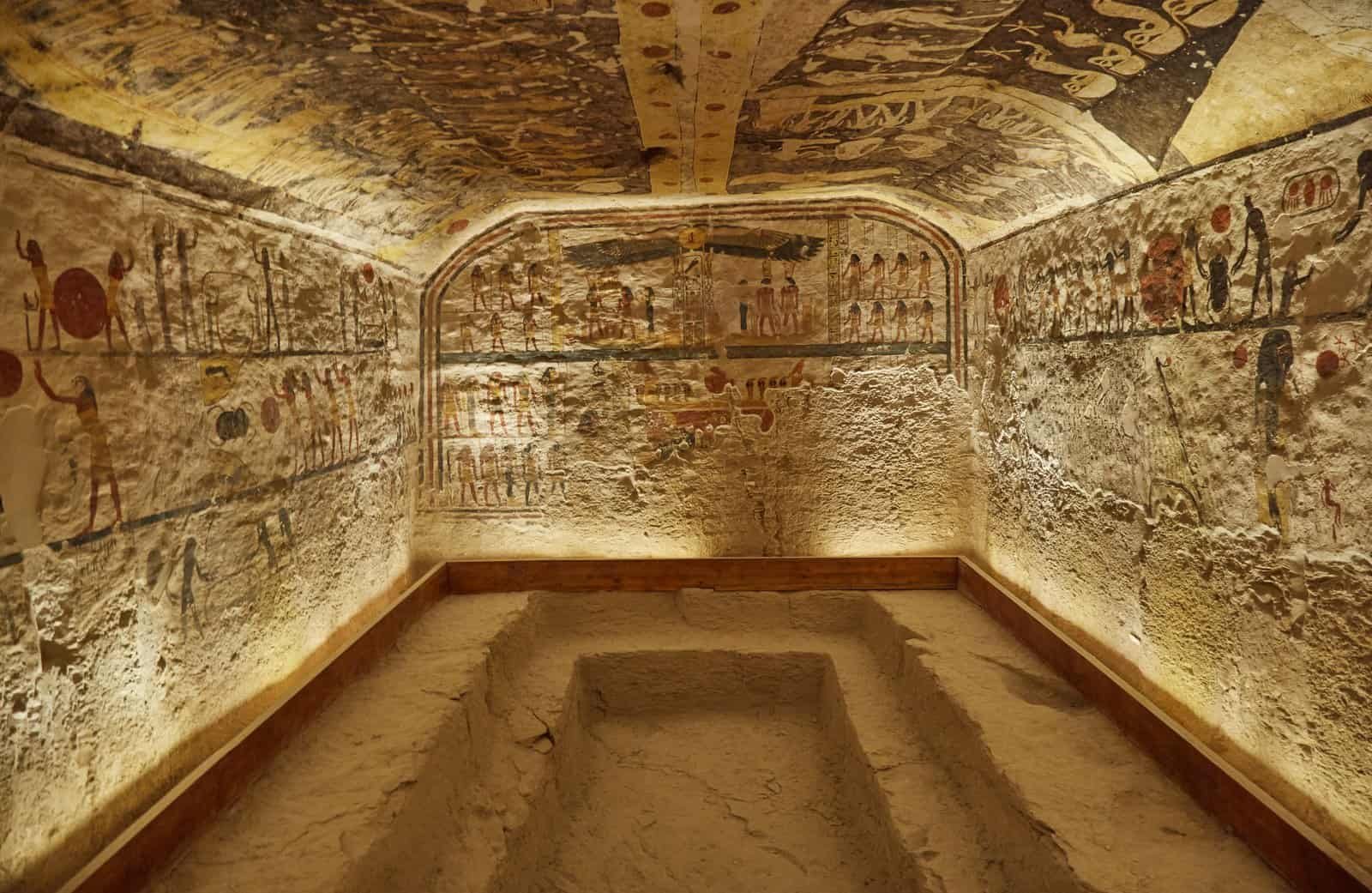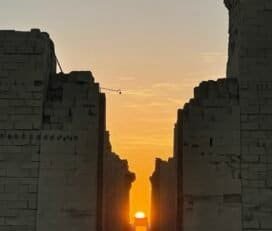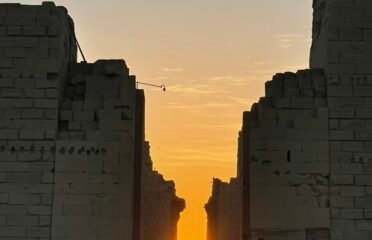Tomb of Ramesses IX – Valley of the Kings, Egypt
Overview
The Tomb of Ramesses IX (KV6) is one of the most visited and beautifully decorated royal tombs in Egypt’s Valley of the Kings, near Luxor. Dating back to the 12th century BC, this tomb was built for Pharaoh Ramesses IX of the 20th Dynasty. Though unfinished at the time of his death, its grand corridors and vibrant wall paintings offer fascinating insight into ancient Egyptian funerary beliefs. With its long passageway, richly adorned with scenes from the Book of the Dead and astronomical texts, the tomb stands as both a work of art and a window into the religious life of ancient Egypt.
Why Visit
- See one of the most colorful and well-preserved tombs in the Valley of the Kings
- Admire detailed scenes from the Book of the Dead and the Book of Caverns
- Walk through the tomb’s long corridor, extending nearly 100 meters into the hillside
- Learn about the reign of Ramesses IX and Egypt’s New Kingdom funerary traditions
- Capture stunning photos of hieroglyphics and vibrant wall art (with a photo permit)
Highlights
- Entrance Corridor: A wide passage with astronomical ceilings showing the sky goddess Nut
- Wall Reliefs: Detailed carvings and paintings depicting gods, underworld scenes, and sacred texts
- Burial Chamber: The final hall, decorated with figures from the Book of Caverns
- Ceiling Artwork: Blue-painted astronomical scenes filled with stars and constellations
- Scale: Nearly 105 meters long, making it one of the largest tombs in the Valley
History & Cultural Significance
Pharaoh Ramesses IX ruled Egypt for about 18 years (1129–1111 BC) during the later part of the 20th Dynasty. His reign saw both political decline and artistic achievement, with tomb construction in the Valley of the Kings continuing despite instability. His tomb, designated KV6, was already partially cut when Ramesses died, forcing workers to hastily finish certain sections. Despite this, KV6 features grand corridors and vivid artwork. The tomb’s inscriptions emphasize cosmic order, protection of the pharaoh in the afterlife, and his journey through the underworld. While the original sarcophagus has been removed, the artistry of the tomb remains one of the most striking in the Valley.
Typical Costs & Tickets
Entry to the Tomb of Ramesses IX is usually included in the standard ticket for the Valley of the Kings, which covers three tombs of your choice. As of recent updates, this ticket costs around 260 EGP (about €8). Photography inside requires an additional permit, typically 300 EGP (€9). Guided tours often include KV6 due to its size and vivid paintings, but visitors can also explore independently. Special passes are required for famous tombs like Tutankhamun or Seti I, but Ramesses IX’s tomb is often accessible without extra fees.
Best Time to Visit
The Valley of the Kings is open year-round, but the best times to visit are in the cooler months (October–April) when temperatures are more manageable. Mornings are ideal, as the valley can become very hot and crowded by midday. Since Ramesses IX’s tomb is one of the larger and more popular sites, visiting early in the day ensures a quieter experience. Summer visits are possible, but prepare for intense heat and bring plenty of water.
Nearby Experiences
The Tomb of Ramesses IX is one of many royal tombs in the Valley of the Kings. Nearby highlights include the Tomb of Tutankhamun (KV62), the Tomb of Seti I (KV17), and the Tomb of Ramesses III (KV11). Outside the valley, visitors can explore the Mortuary Temple of Hatshepsut at Deir el-Bahari, the Colossi of Memnon, and the Valley of the Queens. Luxor itself offers the Karnak Temple Complex, Luxor Temple, and the Luxor Museum, making it one of the richest archaeological regions in the world.
Travel Tips
- Arrive early to avoid crowds and heat in the Valley of the Kings
- Purchase a photography permit if you want to capture the wall paintings
- Wear comfortable shoes—the tomb corridors are long and uneven
- Bring water and sun protection; shade is limited in the valley
- Hire a guide for deeper insight into the symbolism of the wall art
Fun Facts & Local Legends
- KV6 is one of the largest tombs in the valley, stretching over 100 meters into the rock
- The astronomical ceilings show Nut, the sky goddess, swallowing the sun and giving birth to it daily
- Ramesses IX’s mummy was discovered in the 19th century in a royal cache at Deir el-Bahari
- Despite being unfinished, the tomb remains one of the most popular with visitors due to its scale and vivid colors







